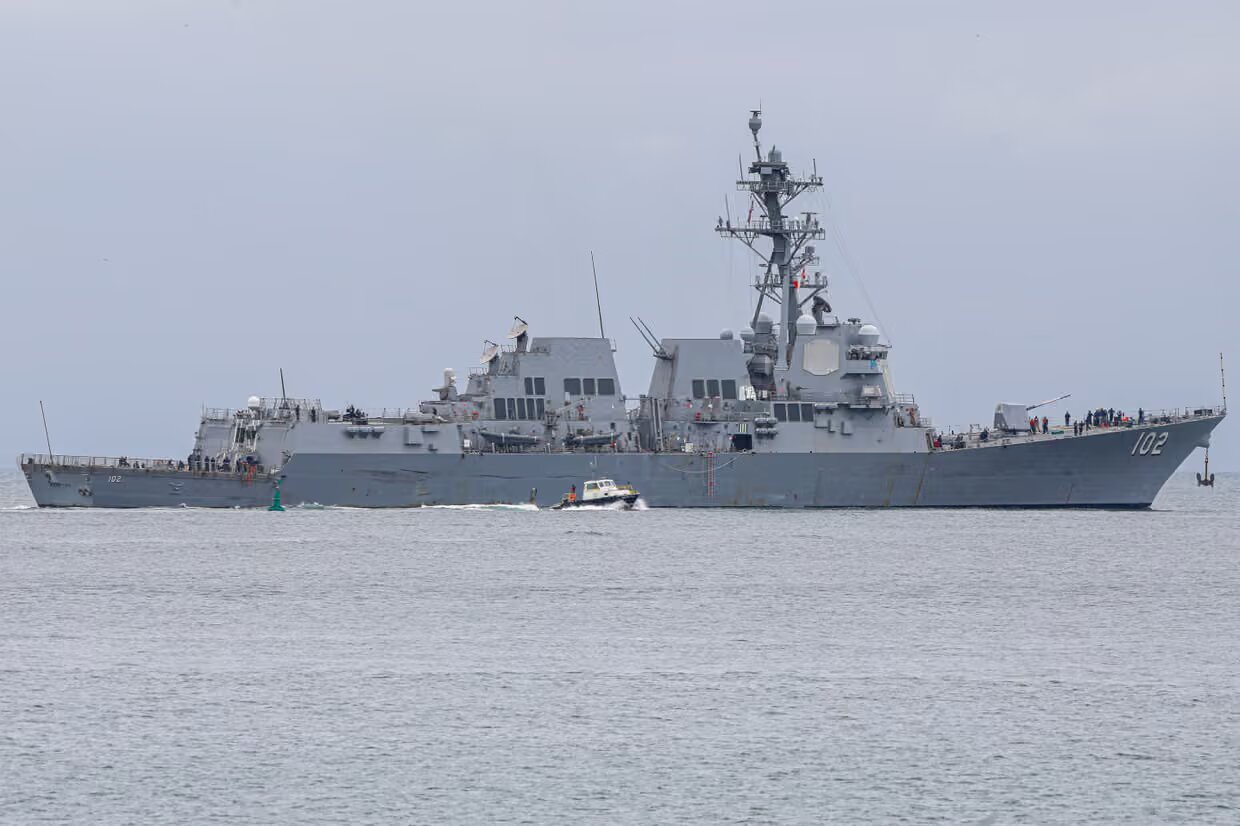Latest strikes were off coast of Colombia, while seven previous attacks in Caribbean killed at least 32

The US military has for the first time attacked and destroyed two boats on the Pacific side of South America, as part of its controversial fight against what it says are drug-trafficking activities.
The strikes – on Tuesday night and then early on Wednesday – killed five people, according to the US defence secretary, Pete Hegseth. They came on top of at least seven other strikes in the Caribbean that have killed at least 32 people and raised tensions with Colombia and Venezuela.
Hegseth released a brief video of the Tuesday night strike, showing a small boat, half-filled with brown packages, moving along at sea. Several seconds into the video, the boat explodes and is seen floating motionless in flames.
In a post on social media, Hegseth took the unusual step of equating the alleged drug traffickers to the terror group that conducted the attacks on the US on September 11, 2001.
“Just as al-Qaida waged war on our homeland, these cartels are waging war on our border and our people,” Hegseth said, adding that “there will be no refuge or forgiveness – only justice”.
The Colombian president, Gustavo Petro, who is in the midst of a spat with Donald Trump over the boat strikes and tariffs, said: “The attack on another boat in the Pacific … killed people. It is murder. Whether in the Caribbean or Pacific, the US government strategy breaks the norms of international law.”
Venezuela is a major drug transit zone, but the eastern Pacific Ocean, not the Caribbean, is the primary area for smuggling cocaine.
In striking boats in the Pacific, the administration widened the scope of its campaign, although the reasons for the expansion were not immediately clear. The White House did not respond to a request for comment and Hegseth gave no additional details other than the video on X.
Trump announced what appears to have been the first strike on a boat on 3 September, releasing a brief video of the attack.
Since then, the Trump administration has detailed more strikes without disclosing many details about the targets other than the number of people killed, and the allegation that the boats carried narcotics. The attacks have prompted widespread condemnation, from civil liberties groups and South American countries.
On Tuesday the Guardian revealed that the Central Intelligence Agency (CIA) is providing the bulk of the intelligence used to carry out the airstrikes. Experts say the agency’s central role means much of the evidence used to select the targets will almost certainly remain secret.
The US president confirmed last Wednesday that he had authorised covert CIA action in Venezuela, but not what the agency would be doing. The US has deployed an extraordinary military presence off the country’s coast.
White House officials have tried to justify the increasing number of strikes with a dubious legal theory that claims the boats are affiliated with “designated terrorist organisations” with which the US was now in a “non-international armed conflict”, the Guardian has reported.
Until this month, the administration has referred to Tren de Aragua and other cartels as foreign terrorist organisations, or FTOs. Legal experts suggested that simply characterising drugs cartels as FTOs did not give the administration any additional authority to use lethal force.
White House officials have also sought to justify the strikes internally and externally by claiming Trump was exercising his article two powers, which allow the president to use military force in self-defence in limited engagements.
The self-defence argument revolves around Trump’s designation of Tren de Aragua as an FTO, a claim advanced by Stephen Miller, Trump’s deputy chief of staff, in order to defend the deportations of dozens of Venezuelans earlier this year under the Alien Enemies Act.
The administration claimed that Tren de Aragua had infiltrated the regime of the Venezuelan president, Nicolás Maduro – and so the presence of the cartel’s members in the US amounted to a “predatory incursion” by a foreign nation, allowing for the deportation of any Venezuelan national.
But the administration has yet to provide concrete evidence that Tren de Aragua has become an instrument of the Venezuelan government, and legal experts said the White House could only justify the strikes if it could make that showing.
The strikes on alleged Venezuelan drug boats have largely been overseen by Miller and Tony Salisbury, his top lieutenant at the White House homeland security council (HSC), the Guardian has previously reported.
Miller empowered the HSC earlier this year to become its own entity in Trump’s second term, a notable departure from previous administrations where it was considered part of the national security council and ultimately reported to the national security adviser.
That was the case, for instance, with the second Venezuelan boat hit with hellfire missiles on 15 September. While the White House was informed that the Pentagon had identified the boat as a viable target more than four days before, many top White House officials only learned of the impending strike hours before it happened.
